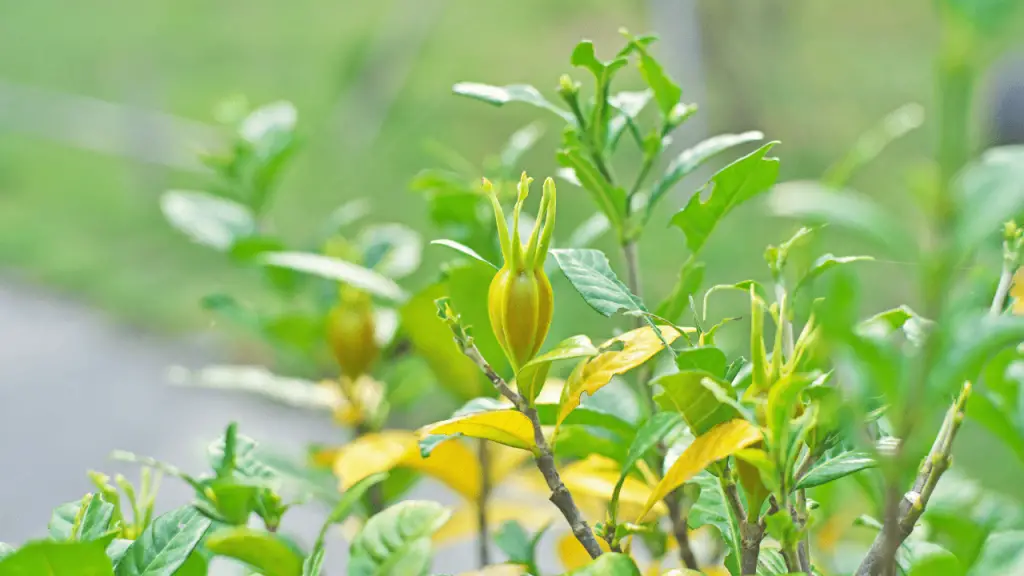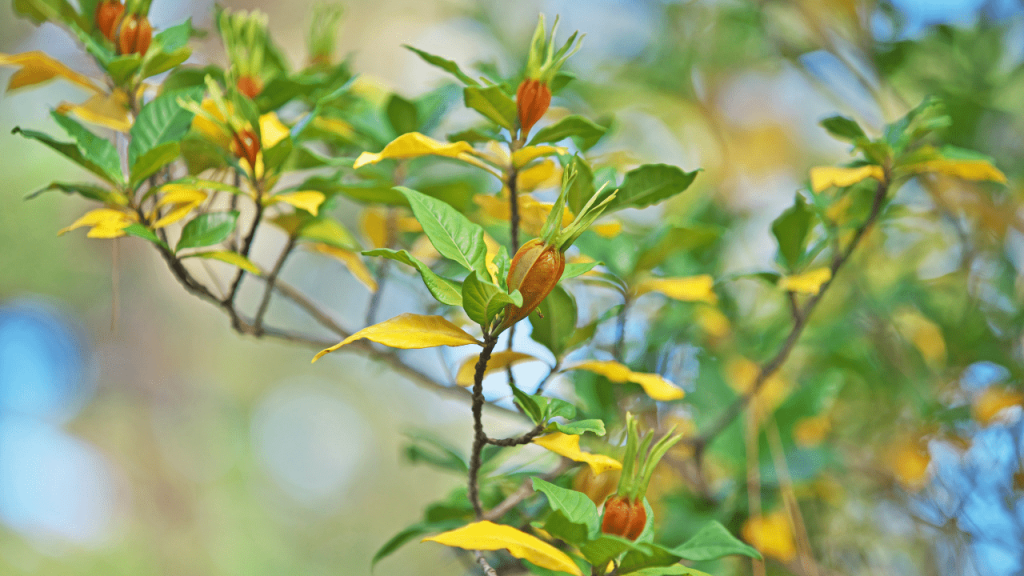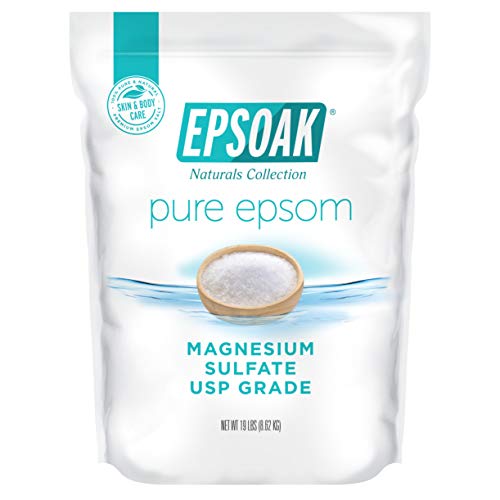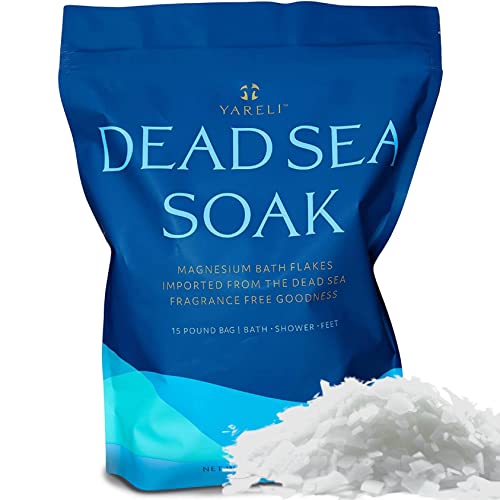Normally at the beginning of spring when new leaves are about to be formed, old gardenia leaves can turn yellow and drop off.
So do not worry if you are experiencing this except if plenty of older leaves are turning yellow which might be due to some defects.
Below are some tips about the causes of the Gardenia Yellow Leaves and the remedy or methods on how to correct this defect in the gardenia plants.
- Gardenia yellow leaves vinegar solution.
- Gardenia leaves turning yellow and falling off.
- Epsom salts for gardenia yellow leaves.
- Should i “remove” yellow leaves from the gardenia.
- Gardenia yellow leaves dropping buds solution.
- what is the best fertilizer for gardenias
What Are The Nutrient Deficiency That Can Lead To Yellow Gardenia Leaves? (13 Causes)
A frequent question asked by most gardeners is “what causes yellow leaves on gardenia bush” Below are some of the reasons for the yellow coloration of your gardenia plant leaves.
1 Nitrogen
- The deficiency of nitrogen results In very crippled, wiry yellow plants or yellow leaves, and often with pink stains.
- The overall yellowing of older leaves occurs (bottom of the plant). Mostly, the other parts of the plant are light green.
- Physical signs are first seen as yellowing (chlorosis) from the edge of the leaf and all around the midrib on mature leaves, while the tips remain green.
- With gangly stalks, the growth becomes stifled. They grow yellow flowers. (Note: the yellowing of the younger leaves firstly occurs due to sulfur deficiency).
2 Phosphorus
- Deficiency of phosphorus results in the gardenia leaves turning dull yellow-green and low growth rate.
- The scale of plants remains very low. tips of leaves appear burnt, and this is followed by older leaves that turn dark green and gradually develop necrotic tissue (dead patches).
- Symptoms include stem reddening, very stifled growth, and weak roots. Flowers are made, but low fruit yields are present.
3 Potassium
- Potassium deficiency leads to a very stifled or stunted plant characterized by yellow or purple leaf stains, browning on the edge of the leaves.
- And poor flowering or fruiting properties. Older leaves will wilt and appear scorched.
- At the root, interveinal chlorosis (yellowing) starts, scorching inwards from the margins of the leaves.
- On older plants, symptoms are first seen as tips margins of the leaves start drying and also accompanied by leaf tissues dying off (necrosis).
- Low resistance to disease and a rise in the vulnerability of the plant to drought, lodging are also seen.
4 Calcium
- Deficiency in calcium results in new leaves being twisted or irregularly shaped (top of the plant).
- The edges and tips of the leaves become necrotic, leading to the rotting of the Blossom-end.
- Growth is at first just marginally affected but gradually ceases as necrotic tissue emerges at the growing points leading to dwarf gardenia yellow leaves.
5 Magnesium
- Magnesium deficiency results in gardenia leave yellowing, these colorations are seen between the veins of the leaf, often with reddish-brown stains and early dropping of the leaf.
- Not as stunted as major deficits in nutrients. Older leaves turn yellow at the base, green gardenia arrowhead forms, or marbling in the middle of the leaf causes interveinal chlorosis (speckling in cereals).
- Across the leaves and at the edges, necrotic tissue is seen. The plant transfers its magnesium to developing tissues, so in older leaves, the deficiency is observed early.
- This inevitably leads to leaf shedding, but the plant is capable of flowering. In tomatoes, apples, grapes, raspberries, and rose plants, magnesium deficiency is normal.
#5 Sulfur
- Deficiency in this compound results in yellow gardenia flowers (younger) firstly, then followed by older or mature leaves.
- Dwarf gardenia yellow leaves are formed as well as Small, stunted plants being produced.
- This should not be mistaken for the symptoms observed in nitrogen deficiency, which is first seen on older leaves before affecting the whole plant.
6 Boron
Boron deficiency in gardenia plants leads to appropriate size being reached, accompanied by growing points dying off, leading to flowers and fruits not developing.
Roots and leaves are deformed by rotting and hollowing. On lettuce, poor growth and tip dieback tend to happen.
#7 Copper
Deficiency in copper leads to the development of dark green leaves and stunted plants.
Gardenia plants exhibit whitening with the leaves folding in spirals and turning over perpendicularly to the stem of the young leaf tips.
Ears can be deformed, poorly developed, and turn white at harvest, mostly confined within the leaf sheath
7 Iron
A deficiency of iron leads to the yellowing of young gardenia leaves, which is observed between the leaf veins. In acid-loving plants, the edges of the leaves are discolored, forming brown spots.
8 Manganese
- Deficiency in results in gardenia yellow spotted leaves or patches that are dead. Yellow gardenia leaves are seen and are observed between the veins of young leaves.
- In acid-loving plants, the edges of the leaves are discolored forming a brown color.
- As observed in iron, the pattern is not as different. Palm fronds, called the ‘frizzle tip,’ are stifled and poorly developed.
- The size of plant parts is usually decreased. Symptoms normally occur on the younger (upper) leaves as a speckled and mottled outline, which then grow into necrosis.
9 Molybdenum
Molybdenum deficiency results in the overall yellowing of mature leaves ( plant lower part).
Mostly, the remaining part of the plant turns light green. There are enlarged, curled leaves developing on cauliflowers or other brassicas (cabbage family) growing in an alkaline environment.
In gardenia plants and brassicas, molybdenum deficiency is typically seen, especially when growing in alkaline deficient soil.
10 Zinc
- Zinc deficiency results in stunted growth and dwarf gardenia leaves. Mature leaves are generally yellow. The majority of the plant parts are typically light green.
- Symptoms are observed as stifled plants show a whitening coloration that can migrate to the veins but stays green on the midrib and leaf edges.
- Symptoms are first seen on older leaves (unlike sulfur deficiency).
11 Nitrate deficiency
Plants use nitrates as a nitrogen source, which is necessary for healthy growth to produce proteins. Via their roots, plants accumulate nitrates in water. Nitrates are found in plant fertilizers at elevated levels.
The quantity of chlorophyll in leaves decreases without nitrates. This signifies that the color of the leaves appears light green or yellow.
This decreases the capacity of the plant to photosynthesize and develop normally, which decreases the crop production of the farmers.
Chemical or natural fertilizers, such as manure, can be applied by farmers to raise nitrate concentration.
The acidic soil is the best for growing Gardenia. You should avoid clay soils. It will not grow well here.
- How To Sterilize Soil For Plants Growth [21 Affordable Tips]- Ultimate Guide
- Greenleaf Organic Pest Control: Best (#21) Tips To Follow [DIY]
- How To Harvest Lettuce! So It Keeps Growing – Ultimate Guide With [15 Tips]
- How To Harvest Spinach Crop! So It Keeps Growing- Exclusive [15 Ways]
How To Treat The Yellow Leaves On My Gardenia Plant

Low iron is the most probable cause of yellow leaves on gardenias. But guess what, huh? You don’t have to apply the iron to solve the problem; all to do is to test the soil.
- Gardenias require acidic soil, i.e. soil pH for gardenia is between the range 5.0 to 6.5. This pH range will give gardenias access to irons in the soil.
- Your soil is in neutral or alkaline concentration if the pH is above those amounts, but that’s simple to solve.
- Just add any acidic fertilizer, for example. Use the fertilizer twice a month from early spring to late summer, immediately the gardenia leaves start turning green again.
- Gardenias can be a little tougher to grow compared to growing other houseplants or outdoor shrubs because of their strict care criteria.
- For several years to come, understanding what they need to have their best appearance, and correctly diagnosing any issues that arise will help you enjoy your plant.
Can Gardenia Yellow Leaves Turn Back To Green?
First things first- when you see a yellow leaf, do not make an unnecessary fuss or panic. The yellow coloration of your plant doesn’t actually mean it is dying. But there is a need to say this:
- It is quite unlikely that a Gardenia yellow coloration on a house plant leaf would turn green again.
- UNLESS that the yellowing discoloration is a result of nutritional deficiency, the green color could return if the deficiency is quickly rectified.
- If not, make peace with the yellow color and put the whole matter of the leaf in place.
gardenia yellow leaves vinegar Solution
Vinegar is often used as a herbicide, when diluted in water, only then should it be added to the soil surrounding gardenias.
Organic farmer Howard Garrett recommends blending a tablespoon of vinegar for every gallon of water at any time you want to water the plant.
This will help acidify the soil surrounding the shallow roots of the plant. Though the effects are brief, irrigating gardenias with a vinegar solution will reduce the pH level of the soil.
Vinegar will only be effective for a few days in the soil, so unless you use a vinegar solution regularly when watering your plant, the pH will surely increase again.
In New Mexico and other states with saline soils, industrial blueberry growers perform clear watering with a vinegar-water solution.
What Is The Best Fertilizer For Gardenias?
Gardenias require acidic soil, i.e. soil pH for gardenia is between the range 5.0 to 6.5. Therefore Before adding gardenia fertilizer, Test to know the soil pH.

If the pH is high, or above 7, it means the soil is in an alkaline condition so adding a soil acidifier will bring it back to the acidic pH gardenias love.
Gardenias are acid-loving plants, you will require a fertilizer produced specially for them, below are some high rated fertilizers.
Scotts Miracle-Gro MirAcid is considered the most widely accepted brand of fertilizer for gardenias.
The fertilizer has a ratio balance of 30-10-10, with the numbers symbolizing the ratio of nitrogen (N), phosphorus (P), and potassium (K) found in the mixture.
Fox Farm Grow Big fertilizer has a balanced ratio of 6-4-4, and it can be found at both local and online stores. It releases organic materials into the soil focusing mainly on nitrogen slowly and steadily.
Yum Yum Mix is another organic fertilizer with a ratio balance of 2-1-1. Produced by Sante Fe landscape design expert Donna Bronner, Yum Yum fertilizer is made especially for nutrient-poor alkaline soils, like those in New Mexico.
Epsom Salt For Gardenia Yellow Leaves
Mixing some of the Epsom Salt in a container, then drenching the root area with it is believed to bring yellow leaves of gardenias back to life, especially during springtime.
The belief behind this method is that the yellow leaves signify magnesium deficiency. Application of Epsom salts will replenish the deficient magnesium, rejuvenating the gardenia in the process.
The Epsom Salt Council, the body that publicizes Epsom salts for gardenia yellow leaves, for health, beauty, and gardening reasons recommends the Epsom salt application every 2-4 weeks for gardenia plants.
Where can I buy Epsom salt near me?
You can get the Epsom salt in a local grocery store near you or you can order it online. Below are my top best recommendations.
- Discover muscle and joint support with our USA-made bath soak. Infused with fast-absorbing magnesium...
- Epsoak Epsom Salt (Magnesium Sulfate) is USP grade. It is GMO free (Genetically Modified Organism).
- Rejuvenating for Mind and Body - Magnesium absorbed transdermally helps to soothe sore and tired...
- Exceptional PURITY AND THERAPEUTIC VALUE; ultra Epsom Salt is the highest quality pharmaceutical...
Last update on 2024-03-19 / Affiliate links / Images from Amazon Product Advertising API
Should I Remove Yellow Leaves From Gardenia?
If the gardenia plant leaves yellowing is a result of causes, such as drainage problems,.
The Gardenia plants need bright sunlight for good growth. If they are turning yellow then you will be required to prune or cut the rot off the plant.
Gardenia Plant Diseases and Other problems
The gardenia plant is not only affected by the yellow leaves disorder, below are some other problems or diseases that can affect your plant and make gardenia leaves turning yellow and buds falling off.
#1 Rotting Roots
Caused by fungus observed by the decay of the plant feet and it can be solved by providing a good drainage system and having a raised bed.
#2 Powdery Mildew
Caused by fungi, seen as a whitish spot on the plant. It can be controlled by the proper spacing of the plants.
#3 Stem canker
Caused by fungi, observed as whitening of leaves on the plant part or all over the plant. It can be solved by preventing injury to the plant.
#4 Sooty molds
Caused by insects mostly and minimally by fungi, observed as a velvety coating on leaves, it can be controlled by controlling insect infestation.
Also, find below interesting gardening blogs.
- Green Lemons Not Turning Yellow (#11 Amazing Tips To Ripen)
- How To Fix Pothos Yellow Leaves (Simple Yet Effective #21 Tips)
- Peace Lily Brown Leaves- Top [20] Reasons And Cures To Revive
- Exclusive [25] Potted Hydrangea Care + Grow Tips
- How To Store Strawberries So They Remain Fresh [11] Pro Hacks
- [17] Tips On How To Store Broccoli, For Keeping It Fresh
- Best Pruning Schefflera: [Step By Step] Easy And Quick Tips
faqs on Gardenia Yellow Leaves fixes
Q1: how to lower soil ph for gardenias?
For lowering the pH, you have to use Aluminum Sulfate or a soil acidifier. Use the instruction written on the product and then apply. For homemade solution dilute vinegar in water and apply.
Q2: Do Gardenias like coffee grounds?
Yes just like any other flower plant, gardenia also likes coffee grounds. You can also mix ashes, tea bags as they are rich in nitrogen, magnesium, and potassium.
Q3: Are eggshells good for gardenias?
As we know eggshells are high in calcium content. Adding these to the soil can boost the plant and helps them to bloom healthily.
Q4: Are banana peels good for gardenias?
Yea bananas are good for all the acid lover plants. As they maintain natural pH levels and helps in plants growth.
Conclusion
The Gardenia Yellow Leaves plant is a major problem associated with its growth in many regions like Australia, Canada.
So do not be disturbed if you can not control this disorder, but ensure to follow the right procedures in growing Gardenia plant.
Follow all the secret tips and tricks in order to prevent and revive yellow leaves on Gardenia.

My name is Olivia, and I live in the United States and love having plants in my garden. Lots of plants are there on my balcony, indoor and outdoor garden also. Here I am trying to share useful gardening tips, how to grow and care for various plants, etc.




